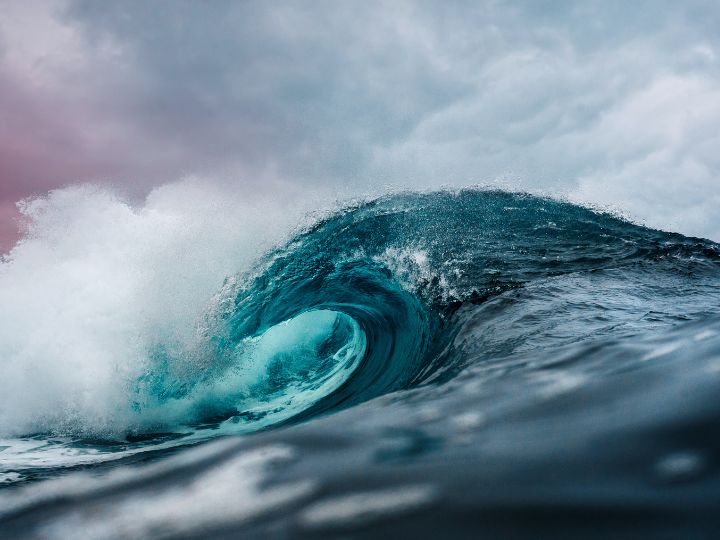Jan 29 2021
Seawater constitutes nearly 96% of all water on planet Earth, a fact that makes it an enticing resource to address the world’s ever-increasing demand for carbon-free energy and clean drinking water.
 A team of researchers led by Zhifeng Ren, director of the Texas Center for Superconductivity at UH, has reported an oxygen evolving catalyst that takes just minutes to grow at room temperature and is capable of efficiently producing both clean drinking water and hydrogen from seawater. Image Credit: University of Houston.
A team of researchers led by Zhifeng Ren, director of the Texas Center for Superconductivity at UH, has reported an oxygen evolving catalyst that takes just minutes to grow at room temperature and is capable of efficiently producing both clean drinking water and hydrogen from seawater. Image Credit: University of Houston.
Researchers are already technically aware of how to both desalinate seawater and disintegrate it to generate hydrogen, which is sought-after as a source of clean energy.
However, the present techniques would need the execution of several steps at high temperatures over an extended period to generate a catalyst with the required efficiency. For this, significant amounts of energy are required, which eventually increases the related costs.
Scientists at the University of Houston (UH) have developed an oxygen-evolving catalyst that requires just a few minutes to grow at room temperature on nickel foam that is commercially available.
When coupled with a hydrogen evolution reaction catalyst reported earlier, the new catalyst can realize industrially needed current density for entire seawater splitting at a lower voltage. The study has been explained in a paper published in the Energy & Environmental Science journal.
Any discovery, any technology development, no matter how good it is, the end cost is going to play the most important role. If the cost is prohibitive, it will not make it to market. In this paper, we found a way to reduce the cost so commercialization will be easier and more acceptable to customers.
Zhifeng Ren, Study Corresponding Author and Director, Texas Center for Superconductivity, University of Houston
He added that quick, inexpensive production is highly significant for commercialization.
Ren’s team of researchers and others have earlier reported a nickel-iron-(oxy)hydroxide compound as a catalyst to disintegrate seawater. However, generating the material demanded a long process at temperatures ranging between 300 °C and 600 °C, or as high as 1,100 °F.
Due to the high energy cost, it was not viable for commercial use, and the high temperatures deteriorated the mechanical and structural integrity of the nickel foam, which made long-term stability a concern, stated Ren, who is also an M.D. Anderson Professor of physics at UH.
To tackle both stability and cost, the team developed a process to make use of nickel-iron-(oxy) hydroxide on nickel foam that is doped with a small amount of sulfur to generate an effective catalyst at room temperature in just 5 minutes. Since the catalyst works at room temperature, both the cost is reduced and the mechanical stability is enhanced, noted the researchers.
To boost the hydrogen economy, it is imperative to develop cost-effective and facile methodologies to synthesize NiFe-based (oxy)hydroxide catalysts for high-performance seawater electrolysis. In this work, we developed a one-step surface engineering approach to fabricate highly porous self-supported S-doped Ni/Fe (oxy)hydroxide catalysts from commercial Ni foam in 1 to 5 minutes at room temperature.
Zhifeng Ren, Study Corresponding Author and Director, Texas Center for Superconductivity, University of Houston
Besides Ren, the study co-authors include first author Luo Yu and Libo Wu, Brian McElhenny, Shaowei Song, Dan Luo, Fanghao Zhang, and Shuo Chen, all from the UH Department of Physics and TcSUH; and Ying Yu from the College of Physical Science and Technology at Central China Normal University.
According to Ren, one key to the team’s method was the choice to make use of a chemical reaction to generate the preferred material, instead of the energy-consuming conventional focus on a physical transformation.
That led us to the right structure, the right composition for the oxygen evolving catalyst.
Zhifeng Ren, Study Corresponding Author and Director, Texas Center for Superconductivity, University of Houston
Journal Reference:
Yu, L., et al. (2020) Ultrafast room-temperature synthesis of porous S-doped Ni/Fe (oxy)hydroxide electrodes for oxygen evolution catalysis in seawater splitting. Energy & Environmental Science. doi.org/10.1039/D0EE00921K.